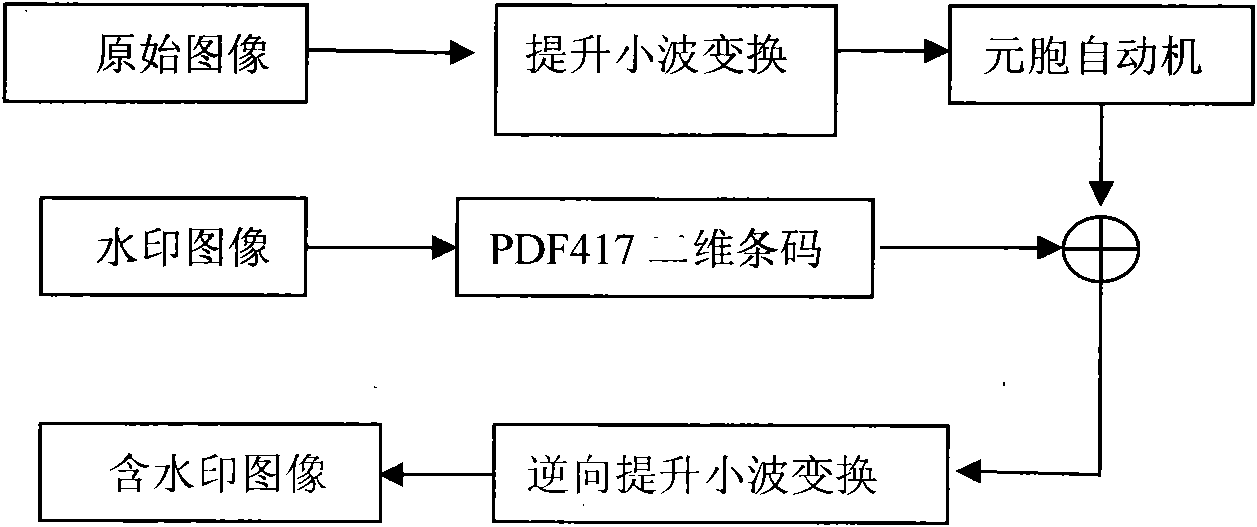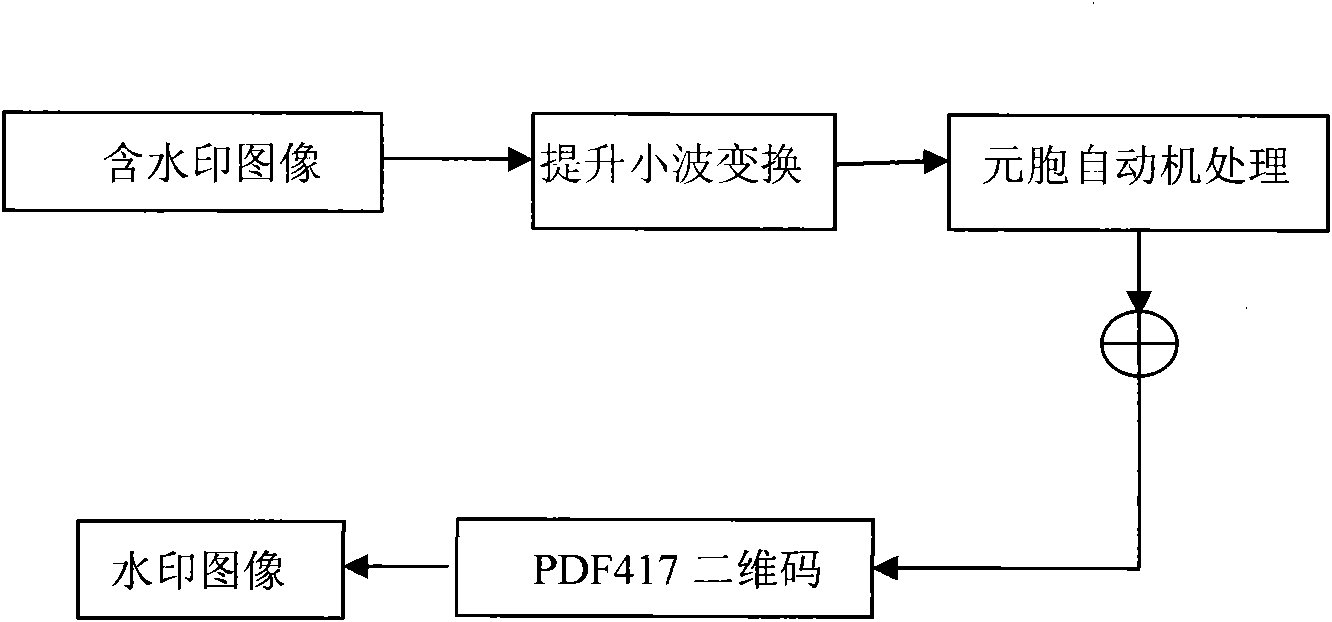Cellular automata-based blind watermark implementing method
A technology of cellular automaton and implementation method, which is applied in the field of watermark processing, can solve problems such as loss of precision images, complex key information, and complex implementation, and achieve large information capacity, high decoding reliability, and strong error correction capabilities Effect
- Summary
- Abstract
- Description
- Claims
- Application Information
AI Technical Summary
Problems solved by technology
Method used
Image
Examples
Embodiment Construction
[0054] 1. The process of embedding watermark:
[0055] The watermark embedding process is divided into four steps, including: lifting wavelet transform for the original image, cellular automata operation, watermark image processing, and digital watermark embedding operation. The implementation process is as follows: figure 2 shown.
[0056] 1. Lifting wavelet transform for the original image
[0057] Assuming that the size of the host image O is N×N pixels, the host image O is subjected to lifting wavelet transform, and four components of the lifting wavelet transform are obtained, denoted as Oa, Oh, Ov, Od, and the sizes of the four components are N× N / 4. The forward lifting process of lifting wavelet can be decomposed into three processes: splitting, prediction and correction. The specific implementation process is as follows:
[0058] (1) split. Decompose the sequence set of images O into two smaller subsets, λ -1 and gamma -1 , for odd and even sets.
[0059] (2) P...
PUM
 Login to View More
Login to View More Abstract
Description
Claims
Application Information
 Login to View More
Login to View More - R&D
- Intellectual Property
- Life Sciences
- Materials
- Tech Scout
- Unparalleled Data Quality
- Higher Quality Content
- 60% Fewer Hallucinations
Browse by: Latest US Patents, China's latest patents, Technical Efficacy Thesaurus, Application Domain, Technology Topic, Popular Technical Reports.
© 2025 PatSnap. All rights reserved.Legal|Privacy policy|Modern Slavery Act Transparency Statement|Sitemap|About US| Contact US: help@patsnap.com



